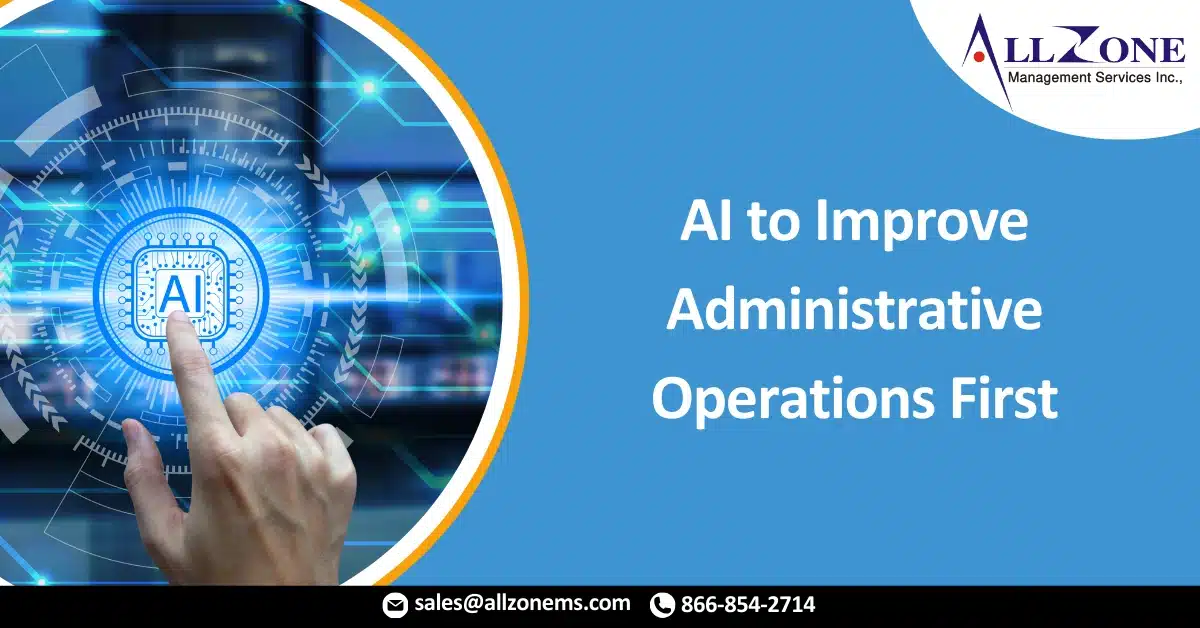Artificial intelligence (AI) is a hot topic right now. Many people are concerned that AI might replace clinicians or other staff. Some aren’t sure exactly what role AI will really play at all, but most believe it will find a place in their healthcare organizations. According to Optum, 94 percent of survey respondents agreed AI is the most reliable path towards equitable, accessible and affordable healthcare, and almost as many thought there would be return on investment for AI.
There are companies looking to use AI to support many clinical operations, but a lot of these use cases are more aspirational right now than practical. Practically speaking, AI probably won’t replace the doctor any time soon—it may not even replace staff—but what it will do is help to improve operational efficiency and reduce manual work for mundane, repetitive tasks. Sixty-eight percent of respondents to a Medscape survey said they believe AI-powered software will allow them to spend more time on other important tasks; making life easier for overworked staff and improve the patient experience.
These tasks aren’t critical like surgical procedures or even infection predictions, they are more administrative such as patient communication, scheduling, payment collection, post-visit follow-up, survey analysis, or issue triaging for patients wanting care. They are priorities that are currently not done at all or are done manually by someone sitting at a desk, dialing a phone or pouring over reports. The current processes are tedious and inefficient but including AI will streamline how organizations receive new insights and improve with patient experience in mind.
Why is this? It’s because generic AI tools simply lack the vertical focus they need that is critical for healthcare, which is why most AI used today is categorized as “narrow AI.” Narrow AI is largely related to advanced analytics, NLP, and machine learning and is great for recognizing patterns and analyzing data to understand responses or predict actions. The things it can do are focused. It can take quick action for specific tasks or in response to specific actions, such as what we see in many chatbots found on websites.
According to Accenture, AI will adapt and flex to automate tasks and self-learn for repeatability at scale. It will help humans focus on adding value and complement, enhance human ability, and improve capital efficiency.
This is why it is perfect for improving patient experience. Sixty-one percent of respondents in a recent survey said they would use an artificially intelligent virtual assistant to handle financial transactions, schedule appointments, or explain their health insurance coverage options. Therefore, patients are comfortable with these uses and they are easy to implement for providers.
There are many simple and repetitive tasks involved in patient communication and many other patient interactions. When done manually they can be very time consuming for staff and patients. For example:
The average appointment scheduling call takes about eight minutes
On average, office staff waste 74 minutes a day tracking down information
The typical visit to a doctor consumes 121 minutes of the patient’s time (travel, forms, and visit)
Patients are frustrated about these issues and others, including poor communication, long wait times, and lack of digital tools. However, many of these problems can be addressed with automation and further improved with AI. Today it can be used to:
Identify best practices: Many AI solutions will come from existing healthcare companies because they have the patient data for analyzing and providing insights. One recent study looked at how the cadence and frequency of automated reminders impacted patient confirmation rates. The insights showed that when the reminders were sent at the right time and in the right way, confirmation rates rose by 156 percent.
Respond 24/7: Because narrow AI is good at interacting in specific ways, it is great for SMS or website chat. It can be used to provide an interactive experience for patients where they can ask questions and get an automated response or be directed appropriately to the right person.
Identify potential no-shows and fill appointments: Patient behavior can be analyzed by AI to predict the possibility of no-shows so the schedule can be adjusted accordingly. Other similar use cases include things like likelihood to pay bills on time or follow through on treatments. It can also automatically reach out to patients waiting for specific appointment types when they are available.
Establish post-appointment care plans: AI can be used to establish the right cadence and content for post-care plans based on prescribed treatment and patient behavior.
Analyze patient sentiment: By scanning through patient reviews and surveys, AI can identify trends and keywords so organizations can see patterns in that feedback.
These use cases are practical and available now, but it is important to note that they still require human intervention. This is why AI isn’t replacing everyone in healthcare, but instead enhancing their interactions. Patients are interested in using AI to save time and increase convenience, but they still want to get to a person when needed. And, while the AI-driven tools can deliver insights, someone still needs to apply those throughout the organization.
Adopting AI is a journey. It should be implemented in stages as the technology is developed to meet the needs found in the healthcare industry. Step one? Administrative operations. The best-case scenario today is to use AI to empower the staff to do more complicated tasks and to focus on patients in-person. Doing so will help ensure the right balance between the technology and the human touch.
For More Information: https://www.medicaleconomics.com/view/use-ai-to-improve-administrative-operations-first

